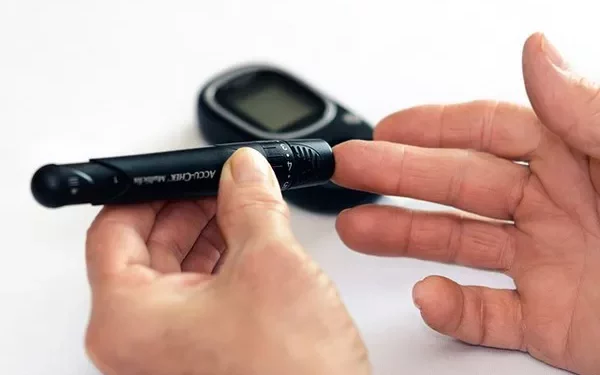Continuous glucose monitors (CGMs) like the Dexcom system have revolutionized diabetes management by providing real-time data on blood glucose levels. Despite their advanced technology and significant benefits, users sometimes encounter accuracy issues. Understanding these issues and their causes can help users optimize the performance of their Dexcom CGMs and achieve better diabetes management.
How Dexcom CGMs Work
Dexcom CGMs measure glucose levels in the interstitial fluid, which surrounds the body’s cells, rather than directly measuring blood glucose. A small sensor inserted under the skin continuously monitors glucose levels and sends data to a receiver or smartphone app. This technology provides valuable insights into glucose trends, allowing for timely adjustments in diet, exercise, and insulin therapy.
Common Accuracy Issues with Dexcom CGMs
1. Sensor Calibration and Warm-Up Period
Initial Calibration
Dexcom sensors require an initial calibration period after insertion. This warm-up phase, typically lasting two hours, is crucial for the sensor to acclimate to the body’s environment. During this time, the sensor may not provide accurate readings.
User Calibration
Although newer Dexcom models like the G6 are factory-calibrated and do not require user calibration, earlier models and some situations might still benefit from manual calibration. Incorrect calibration can lead to inaccurate readings.
2. Sensor Placement and Insertion
Site Selection
The placement of the sensor can significantly affect accuracy. Recommended sites include areas with enough subcutaneous fat, such as the abdomen or upper buttocks for adults and the upper buttocks for children. Inserting the sensor in areas with scar tissue, moles, or excessive muscle can result in poor performance.
Insertion Technique
Proper insertion technique is essential for accurate readings. Users should follow the manufacturer’s instructions carefully, ensuring the sensor is inserted at the correct angle and depth. Inadequate insertion can cause the sensor to malfunction or provide erratic data.
3. Sensor Adhesion and Stability
Adhesive Issues
For the sensor to provide accurate readings, it must remain securely attached to the skin. Adhesive issues, such as the sensor peeling off or becoming loose, can lead to inaccurate data. Users may need to reinforce the adhesive with additional tape or adhesive patches, especially during physical activities or in humid conditions.
Sensor Movement
Excessive movement of the sensor can disrupt its ability to measure glucose accurately. Activities that involve a lot of twisting or pressure on the sensor site can cause inaccuracies. Ensuring the sensor is securely fixed and minimizing activities that could dislodge it can help maintain accuracy.
4. Physiological Factors
Hydration Levels
Hydration status can impact CGM readings. Dehydration can cause the interstitial fluid to have a delayed glucose response compared to blood glucose, leading to discrepancies. Staying well-hydrated can help ensure more accurate readings.
Body Temperature
Extremes in body temperature, such as fever or prolonged exposure to hot environments, can affect sensor accuracy. High temperatures can cause faster sensor degradation, while cold temperatures can slow down the glucose diffusion in interstitial fluid, affecting the sensor’s performance.
5. Sensor Age and Wear
Sensor Lifespan
Dexcom sensors are designed for a specific lifespan, typically 10 days for the G6 model. Using sensors beyond their intended duration can lead to decreased accuracy as the sensor’s enzyme degrades over time.
Environmental Exposure
Exposure to harsh environmental conditions, such as extreme heat or humidity, can accelerate sensor wear and tear. Proper storage and handling of sensors are essential to maintain their accuracy.
Troubleshooting Accuracy Issues
1. Verify Blood Glucose with a Glucometer
Comparison Checks
When experiencing accuracy issues, compare CGM readings with those from a standard blood glucose meter. This comparison can help identify discrepancies and determine if the CGM readings are off.
Regular Verification
Regularly verifying CGM readings with a glucometer, especially during times of suspected inaccuracy, can help maintain confidence in the data provided by the Dexcom system.
2. Re-Calibrate If Necessary
Manual Calibration
If using a model that allows for manual calibration, re-calibrating the sensor can help correct inaccuracies. This involves entering a blood glucose reading from a glucometer into the Dexcom system.
Frequent Calibrations
In cases of persistent inaccuracies, more frequent calibrations might be necessary. However, avoid over-calibrating, as this can also cause erratic readings.
3. Replace the Sensor
End of Sensor Life
If the sensor has reached or surpassed its recommended lifespan, replace it with a new one. Using a sensor beyond its intended duration can compromise accuracy.
Faulty Sensors
Occasionally, sensors may be defective. If a new sensor consistently provides inaccurate readings, contact Dexcom support for a replacement.
4. Optimize Sensor Placement and Adhesion
Choosing the Right Site
Select sensor insertion sites with adequate subcutaneous fat and minimal scar tissue. Rotate sites to prevent skin irritation and ensure better accuracy.
Securing the Sensor
Use additional adhesive patches or tapes to secure the sensor, especially during physical activities or in hot and humid conditions. Products designed for CGMs, such as Skin Tac or GrifGrips, can enhance sensor adhesion.
5. Monitor Physiological Factors
Hydration
Maintain adequate hydration levels to ensure proper interstitial fluid dynamics and improve sensor accuracy.
Temperature Management
Avoid extreme temperatures and manage body temperature to prevent sensor degradation and inaccuracies.
Advanced Troubleshooting and Support
Dexcom Customer Support
Technical Assistance
If troubleshooting steps do not resolve accuracy issues, contact Dexcom customer support. They can provide technical assistance and may offer sensor replacements if necessary.
Software Updates
Ensure the Dexcom receiver or app is up to date with the latest software. Updates often include improvements and bug fixes that can enhance accuracy.
Healthcare Professional Consultation
Professional Guidance
Consult with a healthcare professional who specializes in diabetes management. They can provide personalized advice and support for optimizing CGM use and addressing persistent accuracy issues.
Education and Training
Healthcare professionals can offer education and training on proper sensor insertion, calibration, and troubleshooting techniques to improve user confidence and accuracy.
See also: Is Blood Sugar Monitoring Without Diabetes Worthwhile?
Conclusion
While Dexcom CGMs provide invaluable insights for diabetes management, accuracy issues can occasionally arise. Understanding the common causes of inaccuracies, such as calibration, sensor placement, adhesion, physiological factors, and sensor wear, can help users troubleshoot and resolve these issues effectively.
By following best practices for sensor insertion, maintenance, and troubleshooting, users can maximize the accuracy and reliability of their Dexcom CGMs. Regular verification with blood glucose meters, proper hydration, and appropriate sensor handling are essential steps in ensuring accurate glucose monitoring.
For persistent issues, seeking support from Dexcom customer service and healthcare professionals can provide additional solutions and enhance the overall experience with continuous glucose monitoring.
Related topics:
Why Blood Glucose Monitoring is Important



























